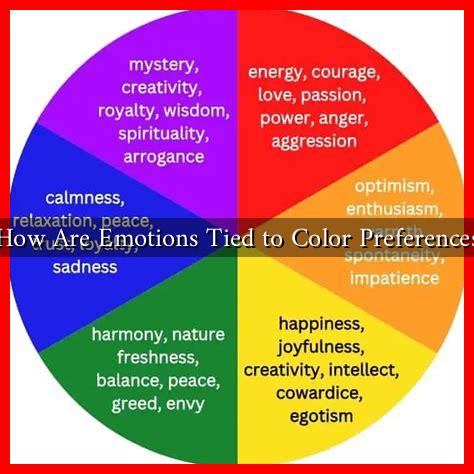-
Table of Contents
How Are Emotions Tied to Color Preferences?
Color is an integral part of our daily lives, influencing our moods, perceptions, and even decisions. The relationship between emotions and color preferences is a fascinating area of study that spans psychology, art, marketing, and design. Understanding how colors evoke feelings can help us make informed choices in various aspects of life, from home decor to branding strategies.
The Psychology of Color
Color psychology is the study of how colors affect human behavior and emotions. Different colors can evoke different feelings, and these associations can vary based on cultural context, personal experiences, and even biological factors. Here are some common emotional associations with colors:
- Red: Often associated with passion, love, and anger. It can increase heart rates and create a sense of urgency.
- Blue: Typically linked to calmness, trust, and sadness. It is often used in corporate branding to convey reliability.
- Yellow: Associated with happiness, optimism, and energy. However, it can also evoke feelings of anxiety in some individuals.
- Green: Represents nature, growth, and tranquility. It is often used in health-related branding.
- Purple: Linked to luxury, creativity, and spirituality. It can evoke feelings of mystery and intrigue.
Case Studies and Research Findings
Numerous studies have explored the connection between color preferences and emotions. One notable study conducted by the University of California found that individuals often choose colors based on their current emotional state. For instance, people feeling happy were more likely to select bright colors like yellow and orange, while those experiencing sadness gravitated towards cooler tones like blue and gray.
Another research project published in the journal “Color Research and Application” examined how color preferences can influence consumer behavior. The study revealed that:
- 75% of consumers make snap judgments about a product based on its color.
- Color can increase brand recognition by up to 80%.
- Colors can affect purchasing decisions, with 85% of shoppers citing color as a primary reason for their choice.
These findings highlight the importance of color in marketing and branding, as companies often tailor their color schemes to evoke specific emotions and attract target audiences.
Cultural Influences on Color Preferences
While certain colors may have universal emotional associations, cultural context plays a significant role in shaping individual preferences. For example:
- In Western cultures, white is often associated with purity and weddings, while in some Eastern cultures, it symbolizes mourning and death.
- Red is considered lucky in Chinese culture, often used in celebrations and festivals, whereas in some African cultures, it may represent mourning.
Understanding these cultural nuances is crucial for businesses operating in global markets, as color choices can significantly impact brand perception and consumer engagement.
Practical Applications of Color Preferences
Recognizing the emotional impact of color can be beneficial in various fields:
- Interior Design: Choosing colors that promote relaxation or creativity can enhance the atmosphere of a space.
- Marketing: Brands can use color strategically to evoke desired emotions and drive consumer behavior.
- Art Therapy: Therapists may use color to help clients express emotions and facilitate healing.
Conclusion
The connection between emotions and color preferences is a complex interplay of psychology, culture, and personal experience. By understanding how colors influence our feelings and behaviors, we can make more informed choices in various aspects of life, from personal style to professional branding. As research continues to evolve, the insights gained from studying color psychology will undoubtedly enhance our understanding of human emotions and their expressions.
For further reading on the psychology of color, you can explore resources like the Color Psychology website, which delves deeper into how colors affect our emotions and behaviors.

